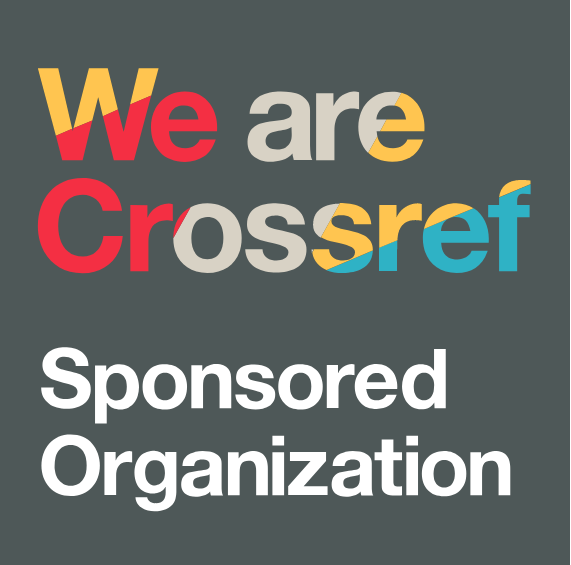Digital-Age Recruitment Planning and HR Strategies in Scandinavian Distribution Firms: A Systematic Literature Review
DOI:
https://doi.org/10.38035/sijdb.v2i4.284Keywords:
Digital Recruitment, Strategic HRM, AI in HR, Distribution Sector, Scandinavia, Workforce Diversity, HR Technology, Systematic Literature Review, Talent MobilityAbstract
This study presents a Systematic Literature Review (SLR) on how digital-age recruitment planning enhances human resource (HR) strategies in distribution companies across Scandinavia. Based on 15 peer-reviewed articles published between 2017 and 2025, the review identifies four key themes: the integration of digital recruitment tools, strategic alignment, sociocultural considerations, and gaps in practice. Scandinavian firms—particularly in Denmark, Sweden, and Norway—are increasingly using AI screening, predictive analytics, and Applicant Tracking Systems (ATS) to improve hiring efficiency and workforce agility. An illustrative case from Denmark further contextualizes the strategic use of digital recruitment in internal mobility. While these tools offer operational benefits, their impact depends on alignment with inclusive, long-term HR planning. The findings offer insights for Southeast Asian organizations and policymakers aiming to adapt to digital HRM transitions.
References
Abdillah, S. R., Yusriani, S., Patiro, S. P. S., Rekarti, E., & Amalia, A. (2024). Individual and Group Aspects in Influencing Organizational Performance. Jurnal Bisnis Mahasiswa, 4(4), 642-651.
B. Holm, A. (2014). Institutional context and e-recruitment practices of Danish organizations. Employee Relations, 36(4), 432-455.
Bag, S., & Wood, L. C. (2022). Guest editorial: Human resource development in the digital age: recent issues and future research directions. International Journal of Manpower, 43(2), 253-262.
Bates, C. (2001). Introduction: Community and identity among South Asians in diaspora. Community, empire and migration: South Asians in diaspora, 1-45.
Berry, J. W., & Sam, D. L. (Eds.). (2006). The Cambridge handbook of acculturation psychology (p. 43). New York, NY, USA:: Cambridge University Press.
Bloom, M., & Bengtsson, C. (2017). Human resource management in a digital era.
Camilleri, M. A. (Ed.). (2021). Strategic corporate communication in the digital age. Emerald Publishing Limited.
Caratu, M., Dragomirov, N., Iovanella, A., & Vlahovic, S. (2025). Strategic issues in digital transformation of HR management: systematic literature review and text mining. Technology Analysis & Strategic Management, 1-18.
Chin, G. V., & Daud, K. M. (Eds.). (2017). The Southeast Asian woman writes back: Gender, identity and nation in the literatures of Brunei Darussalam, Malaysia, Singapore, Indonesia and the Philippines (Vol. 6). Springer.
Christensen, P. S. (2019). How and why Danish migrants and their descendants maintain ethnic identities and practices abroad.
Chytiri, A. P. (2019). Human resource managers’ role in the digital era. SPOUDAI Journal of Economics and Business, 69(1-2), 62-72.
Clifford, J. (1994). Diasporas. Cultural anthropology, 9(3), 302-338.
Cosmin, T. A. T. A. R. U. (2019). Human resources in the digital age. A manager’s realities and perspectives. Revista de Management Comparat Interna?ional, 20(4), 473-480.
Creswell, J. W., & Creswell, J. D. (2017). Research design: Qualitative, quantitative, and mixed methods approaches. Sage publications.
Curraj, E. (2018). Business digitalization of SMEs in Albania: Innovative approaches and their impact on performance. Phd Thesis, October, 1–190.
Dabi?, M., Maley, J. F., Švarc, J., & Po?ek, J. (2023). Future of digital work: Challenges for sustainable human resources management. Journal of Innovation & Knowledge, 8(2), 100353.
DiRomualdo, A., El-Khoury, D., & Girimonte, F. (2018). HR in the digital age: How digital technology will change HR’s organization structure, processes and roles. Strategic HR Review, 17(5), 234-242.
Hanna, N. (2018). A role for the state in the digital age. Journal of Innovation and Entrepreneurship, 7(1), 5.
Hovland, I. V. (2021). Artificial Intelligence for innovating recruitment and selection processes: evidence from Scandinavian companies (Master's thesis, NTNU).
Lengnick-Hall, M. L., Neely, A. R., & Stone, C. B. (2018). Human resource management in the digital age: Big data, HR analytics and artificial intelligence. In Management and technological challenges in the digital age (pp. 1-30). CRC Press.
Manchanda, M., & Arora, J. (2023). Higher Education's Position in Shaping the Workforce of the Future and the Importance of Adapting to the Digital Age. International Journal of Educational Reform, 10567879231211285.
Mankevich, V., & Svahn, F. (2021). Resourcing Digital Competence in Product Development: A Computational Study of Recruitment at Volvo Cars.
Meyer, K. E., Li, J., & Brouthers, K. D. (2023). International business in the digital age: Global strategies in a world of national institutions. Journal of International Business Studies, 54(4), 577.
Mishra, S. R., Lygidakis, C., Neupane, D., Gyawali, B., Uwizihiwe, J. P., Virani, S. S., ... & Miranda, J. J. (2019). Combating non-communicable diseases: potentials and challenges for community health workers in a digital age, a narrative review of the literature. Health policy and planning, 34(1), 55-66.
O’Reilly, J., Ranft, F., Neufeind, M., Gregory, S. S., Zierahn, U., Went, R., ... & Holts, K. (2018). Work in the digital age: Challenges of the fourth industrial revolution. Rowman & Littelfield.
Persson, M., & Wallo, A. (2024). Digital automation and working life of HR practitioners: a gender analysis of the implications for workforce and work practices. Gender, Technology and Development, 28(3), 408-427.
Racano, R. (2020). Companies' Approach to Digitalization in the Recruitment Process-A multiple case study on Swedish firms.
Robbins, S. P., & Judge, T. (2009). Organizational behavior. Pearson South Africa.
Shouraki, M. K., Vares, H., Yazdi, N., Emami, M., & Motlagh, A. T. (2024). Digital Sustainability for Human Resource Management Canvas Meta-Synthesis Approach. J. Mgmt. & Sustainability, 14, 105.
Sorensen, F. K. (2019). Innovative Business Plan for AR Recruit: Recruitment of specialized foreign labor to Denmark (Master's thesis, ISCTE-Instituto Universitario de Lisboa (Portugal)).
Wood, R., & Bandura, A. (1989). Social cognitive theory of organizational management. Academy of management Review, 14(3), 361-384.
Yanti, P., & Gunarto, M. (2022). Analysis of Intention Factors Joining Course Using Advertising social media.
Yusriani, S., & Patiro, S. P. S. (2024). Digital Engagement and Technology Acceptance among the Muslim Community in Denmark: A TAM Approach. Digital Muslim Review, 2(1), 47-75.
Yusriani, S., Rekarti, E., Patiro, S. P. S., & Aftabi, D. (2024). Human Resource Management and Skill Development in the Service Sector within the Framework of the SDGs: A Study on Distribution Companies in Denmark and Germany. Dinasti International Journal of Digital Business Management (DIJDBM), 5(6).
Zhang, J., & Chen, Z. (2024). Exploring human resource management digital transformation in the digital age. Journal of the Knowledge Economy, 15(1), 1482-1498.
Downloads
Published
How to Cite
Issue
Section
License
Copyright (c) 2025 Sri Yusriani, Pitri Yanti

This work is licensed under a Creative Commons Attribution 4.0 International License.
Copyright :
Authors who publish their manuscripts in this journal agree to the following conditions:
- Copyright in each article belongs to the author.
- The author acknowledges that the Siber International Journal of Digital Business (SIJDB) has the right to be the first to publish under a Creative Commons Attribution 4.0 International license (Attribution 4.0 International CC BY 4.0).
- Authors can submit articles separately, arrange the non-exclusive distribution of manuscripts that have been published in this journal to other versions (for example, sent to the author's institutional repository, publication in a book, etc.), by acknowledging that the manuscript has been published for the first time at Siber International Journal of Digital Business (SIJDB).























